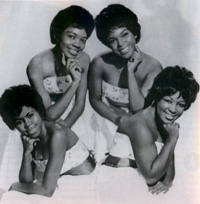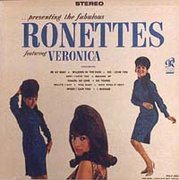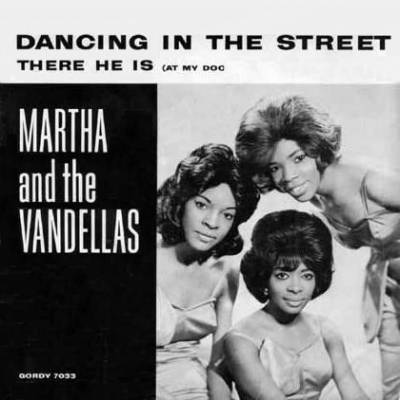GIRL GROUPS
The girl-group phenomenon appeared in the early 1960s and marked an important influence in rock and roll.
 The girl-group sound became the commercial mainstream in early 1961, when the Shirelles had two hits in the Top Ten--"Will You Love Me Tomorrow" (the first song by an all-girl group to ever hit Billboard's No#1) and "Dedicated to the One I Love." Other great hits include "Be my baby" (The Ronettes), "Dancing in the Street", "Nowhere to run" (Martha and the Vandellas) and "Stop! In the name of love" (The Supremes). The girl-group sound became the commercial mainstream in early 1961, when the Shirelles had two hits in the Top Ten--"Will You Love Me Tomorrow" (the first song by an all-girl group to ever hit Billboard's No#1) and "Dedicated to the One I Love." Other great hits include "Be my baby" (The Ronettes), "Dancing in the Street", "Nowhere to run" (Martha and the Vandellas) and "Stop! In the name of love" (The Supremes).
Some of the girl groups became well known at an amazing speed. Many of the girl groups were teenagers and almost all of them were black. However, that was not known to many fans at the time, partially because of the concern that America's teens would like the songs better if they did not know the singers' color.
The most successful girl groups were:
 The Supremes The Supremes  The Ronettes The Ronettes
 Martha and the Vandellas Martha and the Vandellas
 The Shangri-Las were white and had big hits, so their picture appeared much more in public than all-black girl groups. They wore black leather jackets and skintight pants with go-go boots. Their image campaign was so successful that some radio stations would not play their hit "Leader of the Pack". The Shangri-Las were white and had big hits, so their picture appeared much more in public than all-black girl groups. They wore black leather jackets and skintight pants with go-go boots. Their image campaign was so successful that some radio stations would not play their hit "Leader of the Pack".
Besides harmony singing, girl group songs of the time were characterized by high-end production, and producers were often as important to the recordings as the artists themselves. Phil Spector was the most famous producer of the era.
By the mid to late 1960s, in the face of the British Invasion and the increasing popularity of rock music, the popularity of girl groups began to fade. Ironically, prior to 1966, girl groups had such big hits that they sometimes knocked the Beatles out of the #1 spot. The Beatles even had the Ronettes as their opening act for an early-sixties tour.
Listen to:
The Shangri-Las - Leader of the Pack
The Shirelles - Will you still love me tomorrow
|

